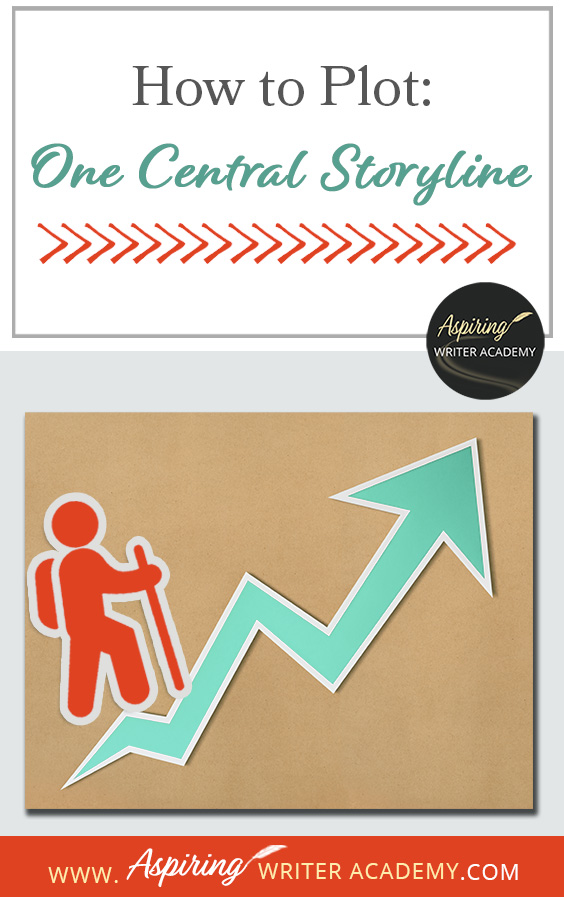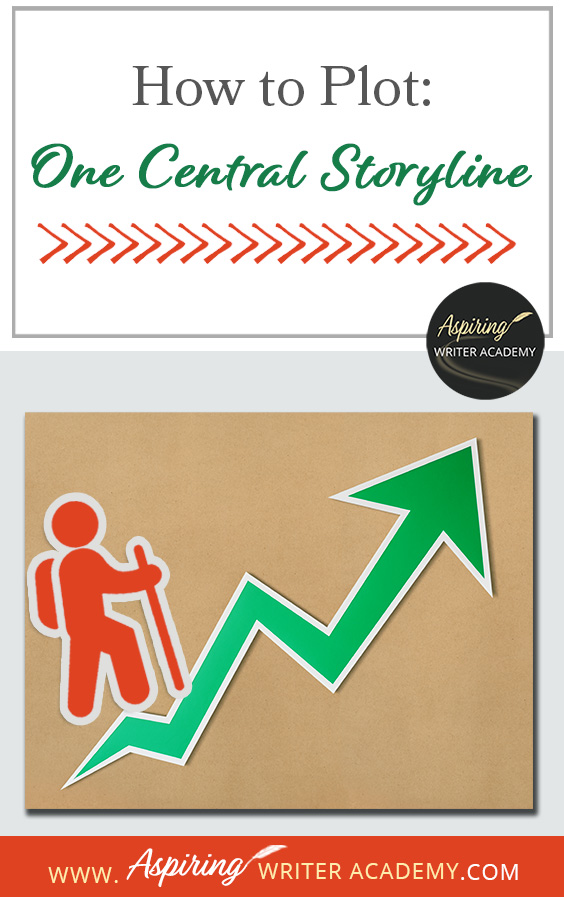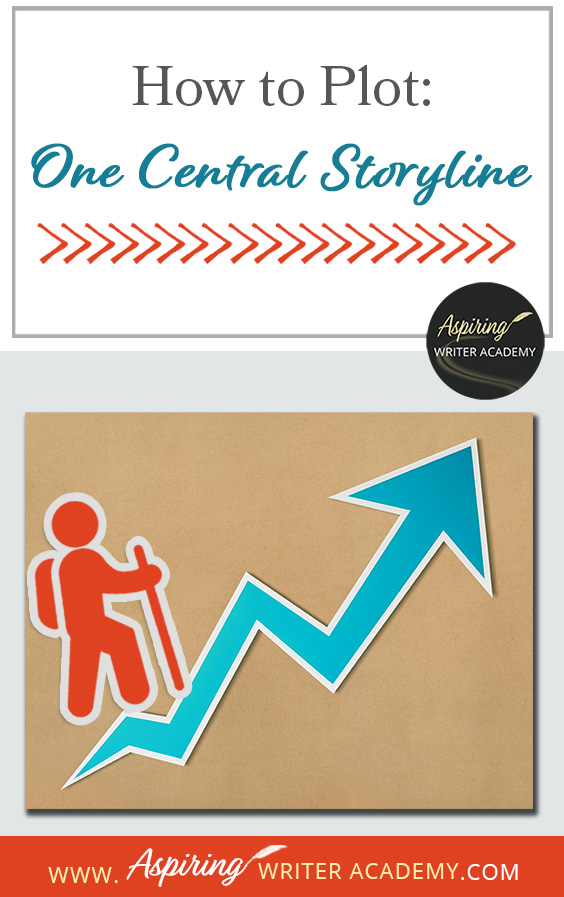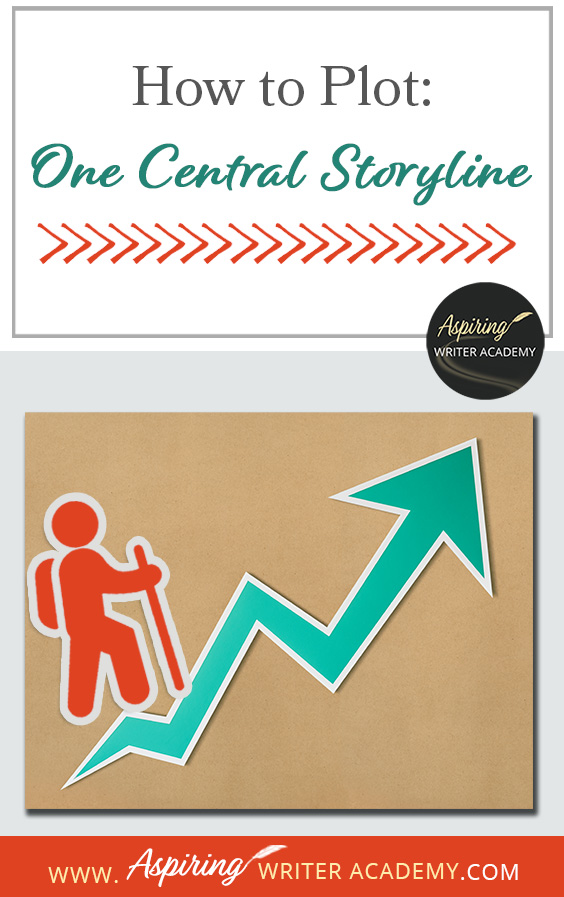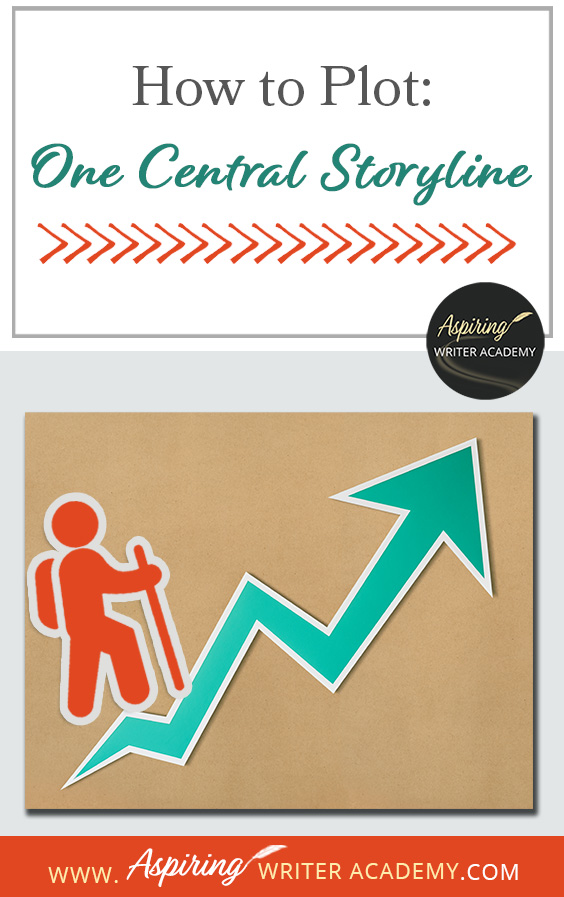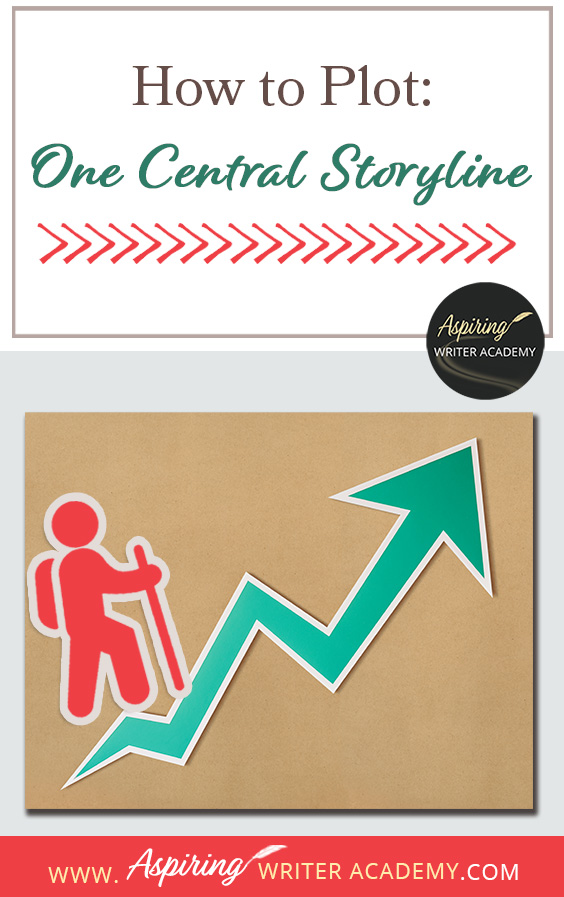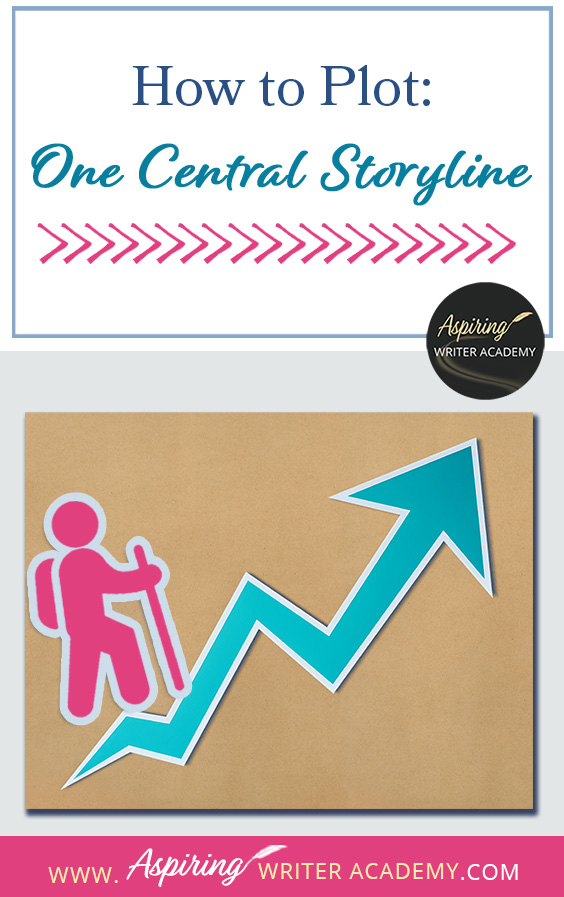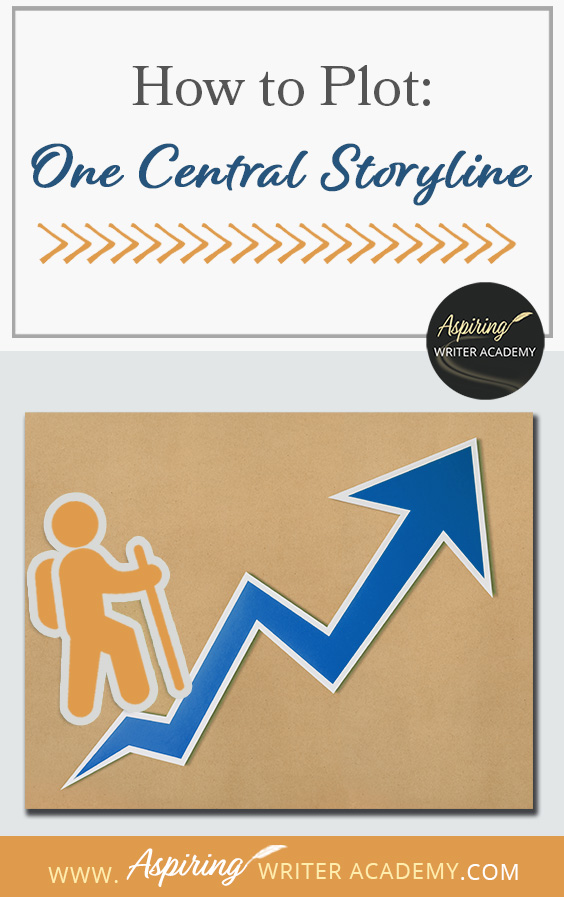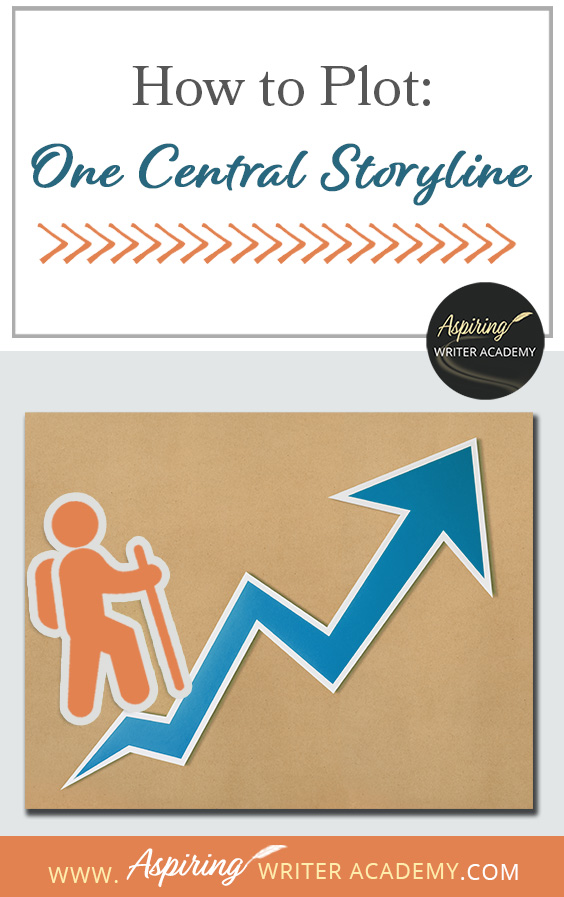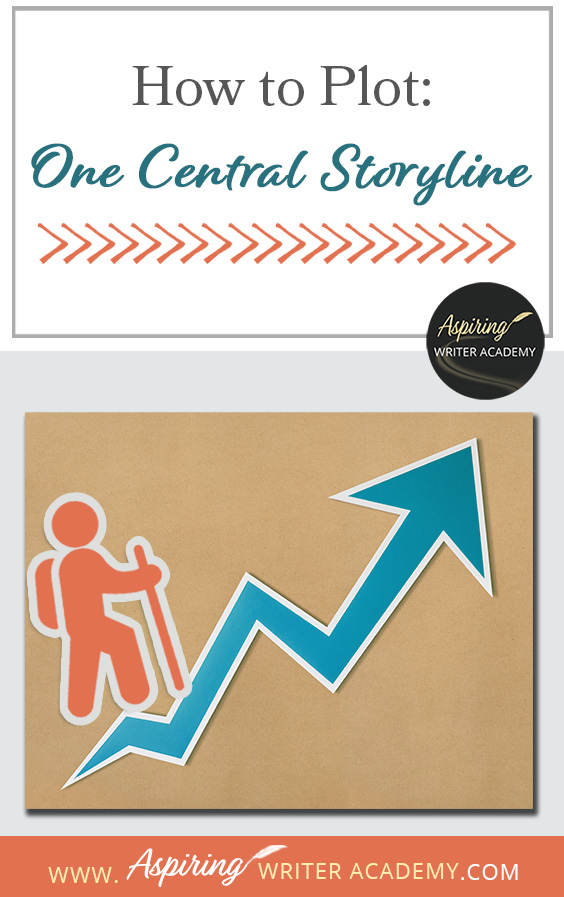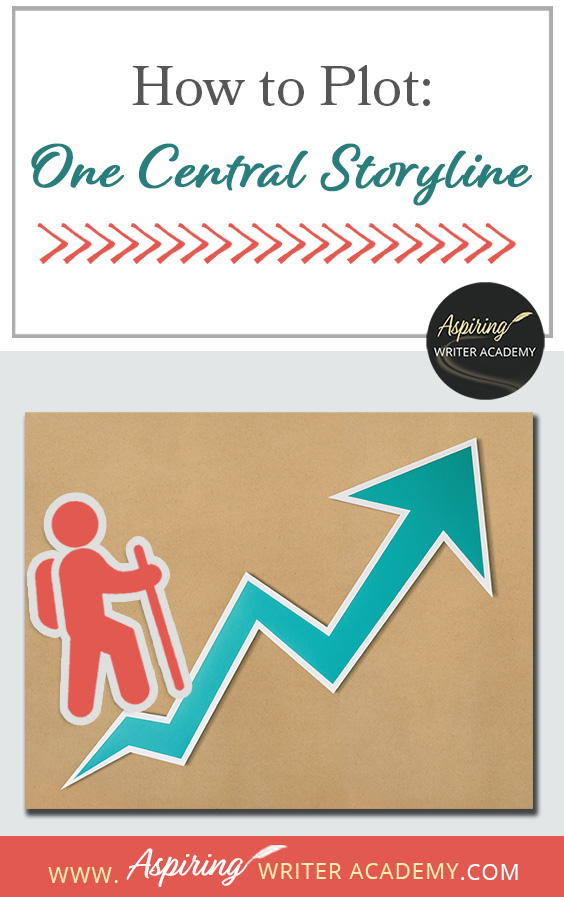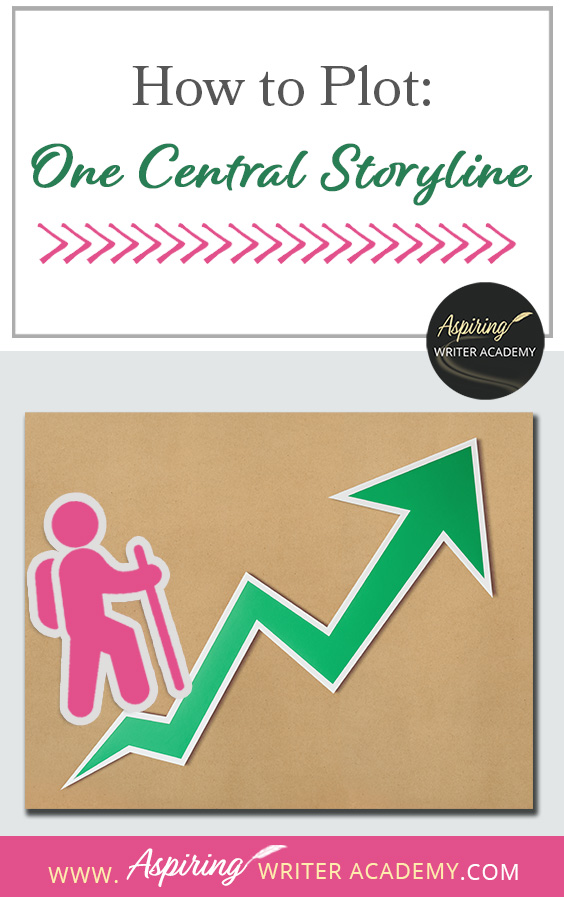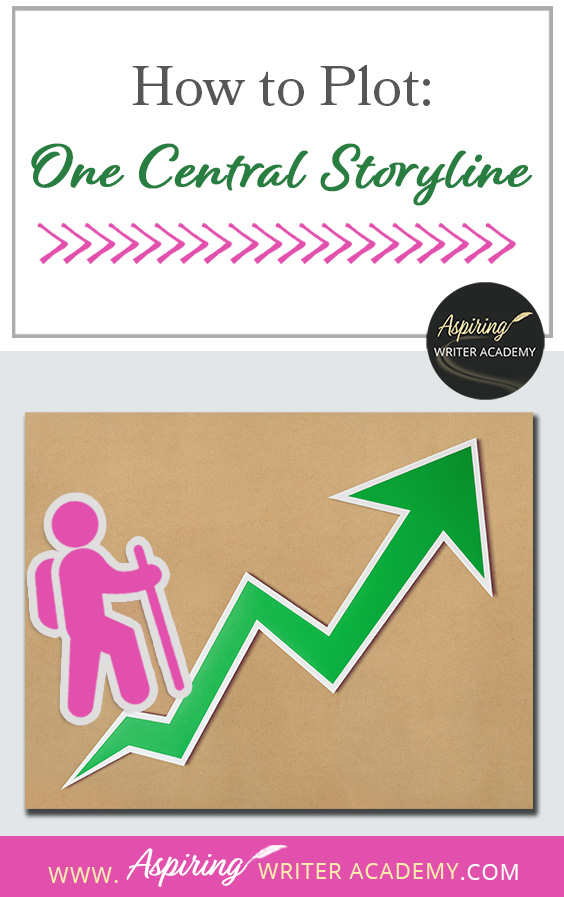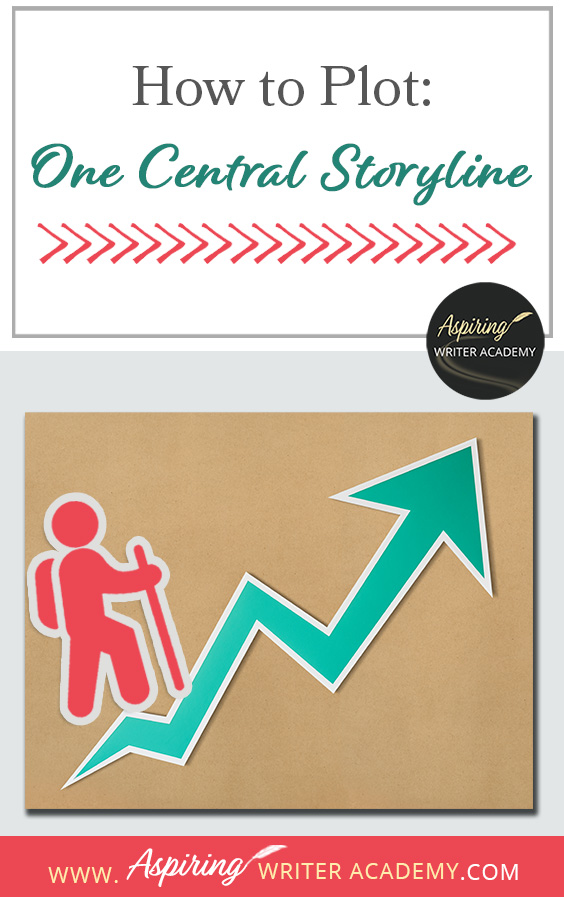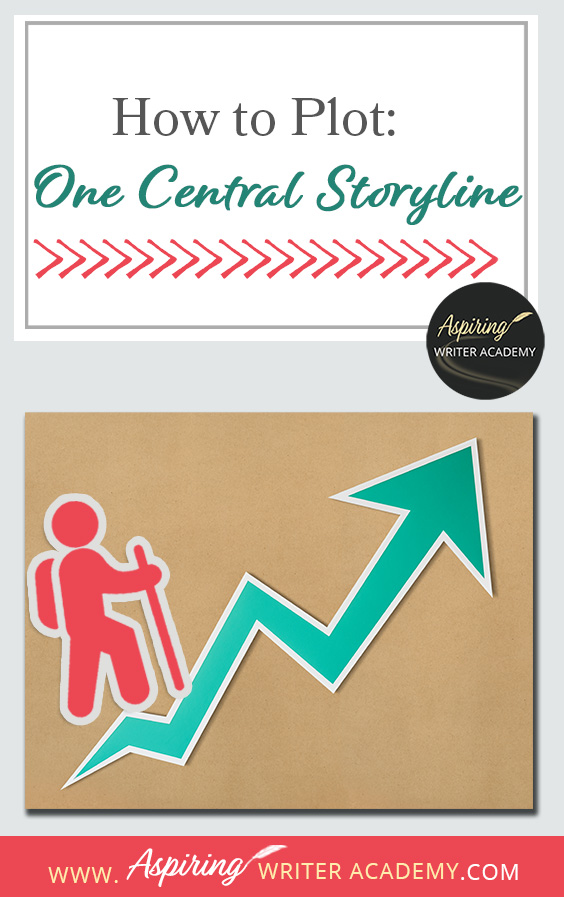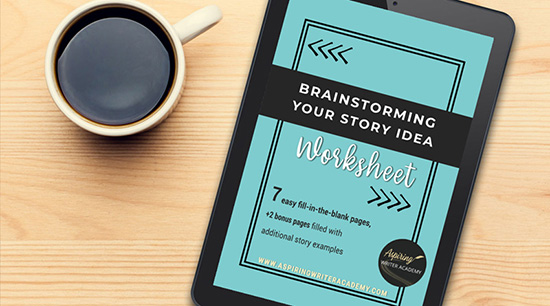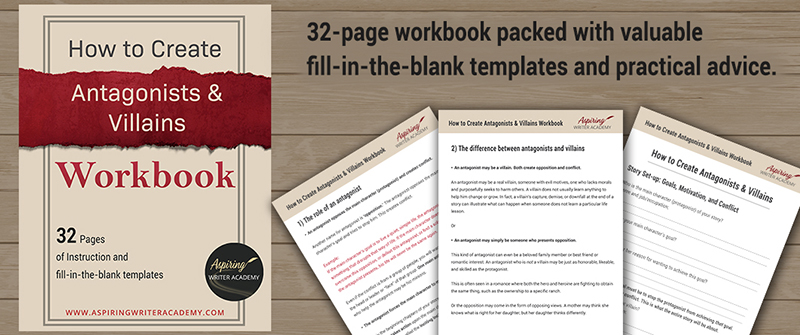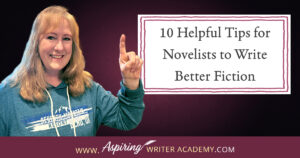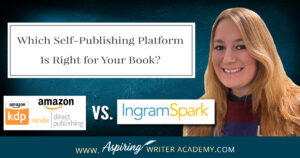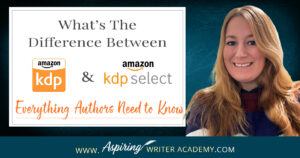How to Plot: One Central Storyline
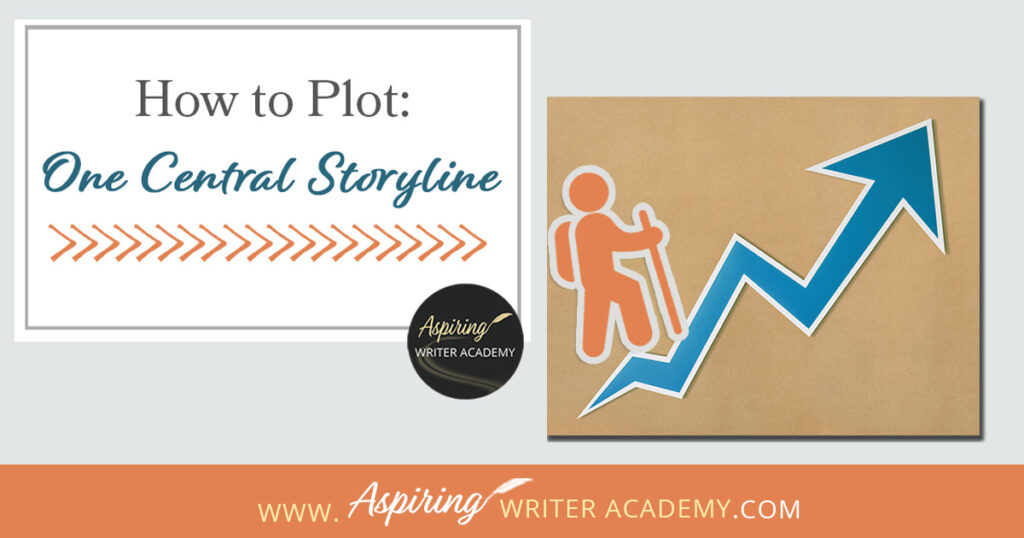
When others ask what your story is about, do you have trouble coming up with an answer that does not take fifteen minutes to explain? Can you condense the main plot down into a single sentence? Is there a focused theme? Do the subplots relate to the core idea of your novel, or do they go off in a million different directions?
How to Plot: One Central Storyline helps you avoid ‘the eyeroll,’ polite nod, and ‘glazed look’ of agents, editors, and readers so they are excited to read each page.
Follow along as we discuss:
- Core Conflict
- Story Theme and its Variants
- Adding Subplots
1) Core Conflict
When an agent or editor tells you that you need to add more conflict to the manuscript of your fictional novel, the solution is not to add more characters or more subplots. It means the main plot needs more tension and suspense. More action steps taken by main characters that raise the stakes and make the achievement of their goals more dire. The consequences of failure become even worse.
Is the core conflict of your novel strong enough, consequential enough to uphold an entire book?
A young woman who is dumped by her boyfriend at a lavish party is an idea. Perhaps an idea for a single scene, which can certainly act as an inciting incident to launch the character on a story journey. But this idea is not comprehensive enough to carry a full-length novel.
What if the young woman who is dumped goes home to find her cat went missing, the next day she is fired from her job, then she finds her house burned down? Isn’t that a lot of conflict?
Yes, but the character is too busy reacting to what is happening to her to take any action of her own choosing. The story becomes ‘episodic,’ without any real meaning, believability, or connection. Yawn! More action and more horrible events does not necessarily mean more exciting.
Character + Goal + Stakes = Story Premise (Core Conflict)
A character (Who? What is their occupation? What is a descriptive adjective that defines this character?) with a goal (What does this character want? What is this character’s goal? What must he or she achieve?) must overcome seemingly insurmountable opposition (Who opposes this character’s goal? Who wants to stop him? And why?) or this will happen. (What are the consequences? What happens if the main character cannot overcome the opposition? How will it affect his life? And possibly the lives of others?)
It should not be the events, but the characters, who drive the story forward in a series of stimulus-response units as they make decisions and take action on a goal that requires several challenging steps to achieve.
Example:
The main character (protagonist) decides to pursue a goal and takes his first bold step in trying to achieve that goal.
The opposition (antagonist or villain) decides he needs to stop the protagonist and takes action by doing (this________.)
In response to the action taken by the opposition, the protagonist decides he must now do (this__________) to try to overcome the opposition and achieve his goal.
However, in response to his response, the opposition now does (this______.)
And so on and so on, raising the tension and consequences until the story reaches a face-off between the two at the climax toward the end of your fictional novel.
However, when someone asks what your novel is about, they do not want you to systematically list each step the characters take along the way. Nor do they want you to go into detail about all your subplots. They just want to know the main story premise. (In just one or two sentences, so you do not bore them to tears.)
Now go back to the Story Premise paragraph. What is the Core Conflict between the protagonist and antagonist? What does the protagonist want to do that the antagonist is trying to stop? What happens if the protagonist fails? It is riveting enough to hold readers’ attention?
This is the One Central Storyline for your novel. This is what focuses your novel and holds it together from beginning to end. The beginning of the novel begs the reader to ask the question: Will the protagonist be able to achieve this goal? The end of the novel should answer that question for the reader with a definitive yes or no.
You may ask: But what about all my ideas for other characters and subplots?
Keep reading and we will soon discuss them. In the meantime, complete the following exercise to create One Central Storyline.
Hands-On Exercise:
Create a one sentence summary of your novel. (No subplots.)
A (dominant personality trait, adjective, profession) _______________ wants (what?)_________________________________ but when (who or what is the opposition?)____________________________ tries to stop him, he must find a way to (what must the protagonist try to do to overcome the opposition?)___________________________________________________, or (what will happen?)_____________________________________________________.
2) Story Theme and its Variants
Another question you might want to ask is: Why is achieving the goal or defeating the opposition so difficult?
Does the protagonist have to leave his comfort zone and enter new territory?
Does he or she have a weakness, character flaw, or bad habit that makes what needs to be done even harder?
Does the character need to change or grow?
What does this say to readers of your fictional novel? Does it lead to a theme?
At the heart of the conflict between the protagonist and antagonist, what does this conflict and what is needed to resolve this conflict, suggest?
What must the protagonist learn?
- That crime doesn’t pay?
- That love conquers all?
- Forgive others, or learn to forgive yourself?
- Perseverance and resilience lead to success?
- Money and greed lead to corruption?
- Learn to open your heart and trust others?
There may be a few themes at work in your novel, but what is the One Central Theme you think best sums up the premise?
Example:
Forgiveness. (The protagonist must learn to forgive himself for past mistakes before he can work with others to overcome the opposition and find success.)
Variants of Theme
Now let’s look at a few variants of that central theme (of forgiveness) that could be included in the story, different ways of looking at that theme.
- The consequences of not learning to forgive himself, loneliness, bitterness, guilt.
- Forgiving, even when it is not deserved.
- Forgiveness that is not welcomed or easily accepted.
- How forgiveness may lead to companionship or trust.
- Forgiveness between parent and child, or between sisters, or between a romantic couple.
- Barriers to forgiveness.
- Those who place limits on forgiveness.
Hands-On Exercise:
List the primary theme.
The core theme of my novel (what my novel is truly about) is:___________________________________.
Variants of this theme that could be included in the story:
_____________________________________
_____________________________________
_____________________________________
_____________________________________
3) Adding Subplots
When you first came up with the idea to write this story, you may have had some great ideas for subplots that you thought to include.
But let me ask you this: Do those subplots relate to the main core conflict, the main story premise? Do they impact the plot in any way?
A focused cohesive story only includes subplots that either support or contrast with the core story of the novel. These subplots exist and are worthy of inclusion because they use variants of the central theme.
Using our example above, if the theme is forgiveness, how can you create stronger subplots using the other variants of the core theme using sub characters?
(Remember, sub characters should only be included in the story to either help or hinder the main characters. They can be allies, family, friends, minions, foils, mentors, tricksters. They have a purpose for being included. If not, away they go!)
Example:
If the protagonist has to learn to forgive himself and it leads to success at the end of the story, perhaps have a subplot with a side character who cannot forgive himself and it leads to failure and doom.
Another subplot can have a side character refuse to forgive others and it leaves him bitter.
The love interest of the protagonist may have to learn to forgive him for pulling away after he refused to forgive himself.
The best friend of the protagonist may see him learning to forgive himself and realize he needs to forgive himself for past deeds too. Or maybe he needs to go forgive his estranged gruff father or ask forgiveness of someone he once cheated. The protagonist learning to overcome his weakness toward forgiving can inspire change in others.
Doesn’t this make the story more meaningful?
Hands-On Exercise:
Use the list of theme variants that you created from the core theme of your novel and brainstorm possible subplots and side characters to show these variants. How can each of these impact the main characters in the main storyline?
A stubborn writer may whine, but I really wanted to include a subplot where the protagonist’s sister learns to fly a spaceship and travels to Mars! But if this subplot or ‘story thread’ does not impact the conflict between the main protagonist and his antagonist or shed a light on a different aspect of the core theme of the novel, then sorry! It doesn’t really serve the story.
Strong, meaningful, interrelated subplots create a stronger story.
And one central storyline with supporting subplots connected by a core theme helps you plot a fictional novel that readers cannot put down!
We hope you have enjoyed How to Plot: One Central Storyline and that you have gained some valuable tips to focus your novel and keep readers entertained the whole way through.
If you have any questions or would like to leave a comment below, we would love to hear from you!
If you like more help developing your story, you may wish to download our Free Brainstorming Your Story Idea Worksheet
We Believe All Authors Can Aspire to Take Their Writing to the Next Level!
Do you find it difficult to create compelling antagonists and villains for your stories? Do your villains feel cartoonish and unbelievable? Do they lack motivation or a specific game plan? Discover the secrets to crafting villains that will stick with your readers long after they finish your story, with our How to Create Antagonists & Villains Workbook.
This 32-page instructional workbook is packed with valuable fill-in-the-blank templates and practical advice to help you create memorable and effective antagonists and villains. Whether you're a seasoned writer or just starting out, this workbook will take your writing to the next level.
Our Goal for Aspiring Writer Academy is to help people learn how to write quality fiction, teach them to publish and promote their work, and to give them the necessary tools to pursue a writing career.
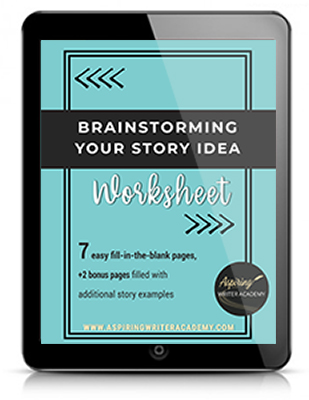
ENTER YOUR EMAIL BELOW
TO GET YOUR FREE
"Brainstorming Your Story Idea Worksheet"
7 easy fill-in-the-blank pages,
+ 2 bonus pages filled with additional story examples.
A valuable tool to develop story plots again and again.
Other Blog Posts You May Like
How to Use ‘The Hero’s Journey’ to Plot Your Novel
10 Tips for Using Flashbacks in Your Fictional Novel
How to Use Framing Techniques in Your Fictional Novel
How to Write a Novel with the W-Plot Template
How to Use Themes in Your Fictional Story
Fiction Writing: What is a Pinch Point?
7 Tips for Writing a Story Synopsis
Fiction Writing: What is the ‘Black Moment?’
Fiction Writing: What is the ‘Man in the Mirror Moment?’
Fiction Writing: What is a Plot Hole?
How to Write Act III and Finish Your Fictional Story in 5 Steps
Structuring Act II (Part 2) for Maximum Impact: How to Keep Readers Engaged
Structuring Act II (Part 1) for Maximum Impact: How to Keep Readers Engaged
How to Use Setting to Intensify Your Fictional Scenes
How to Manipulate Pacing to Increase the Intensity of Your Scenes in a Fictional Novel
How to Brainstorm a New Novel Using Goal, Motivation, and Conflict
Fiction Writing: How to Plot a Story where the Antagonist is an ‘Invisible Foe’
Fiction Writing: Create a Storyboard to Map Out Your Scenes
3 Ways to Avoid Writing ‘Episodic’ Scenes in Fiction
How to Write Act I: Opening Scenes for Your Fictional Story
Brainstorming Fiction: What to Do When Your Story Gets “Stuck”
How to Plot Your Fictional Novel (with Free Template Included)
5 Questions to Create Believable Villains

is a multi-published author, speaker, and writing coach. She writes sweet contemporary, inspirational, and historical romance and loves teaching aspiring writers how to write quality fiction. Read her inspiring story of how she published her first book and launched a successful writing career.
